#southwestern europe
Text
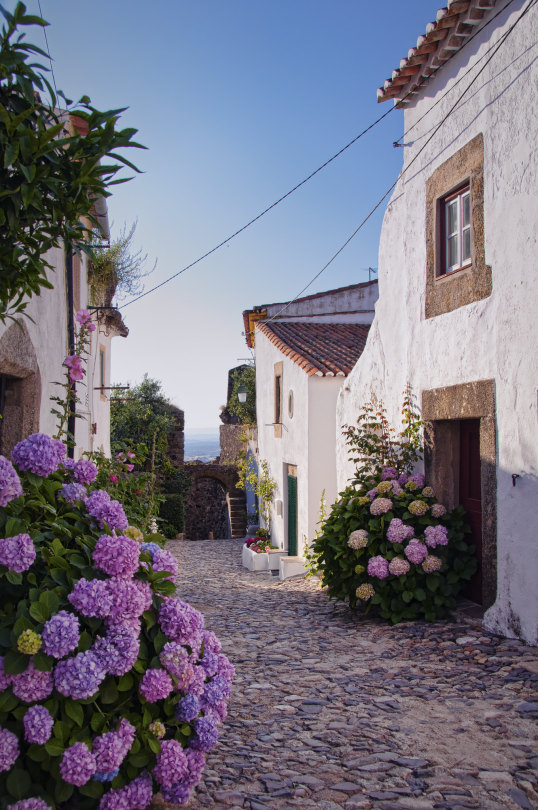
By Rui Pedro Vieira
Castello de Vide, Portalegre, Portugal
#curators on tumblr#portugal#europe#travel#architecture#vertical#Castello de Vide#Portalegre#southwestern europe#rui pedro vieira
106 notes
·
View notes
Text
Our archaeologist might look at the Upper Paleolithic flowering of southwestern Europe between 20,000 and 12,000 years ago, with all those famous artworks and complex tools, and wonder whether Eurasia was already getting a head start then, at least locally.
"Guns, Germs and Steel: A Short History of Everybody for the Last 13,000 Years" - Jared Diamond
#book quote#guns germs and steel#jared diamond#nonfiction#archaeologist#europe#upper paleolithic#eurasia#southwestern europe#artwork#tool use
0 notes
Text
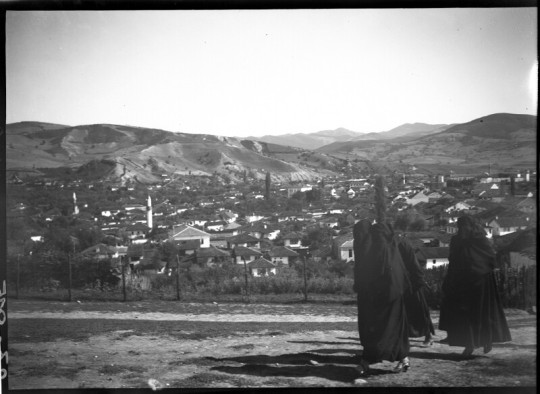
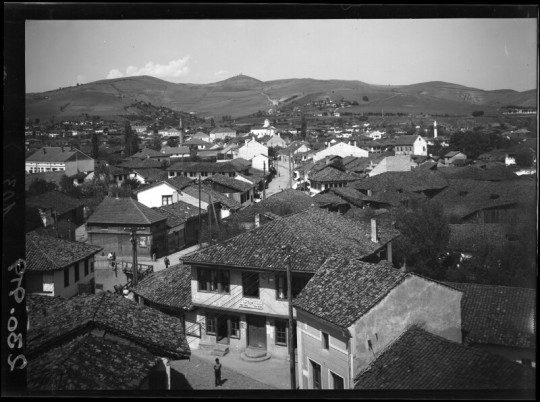

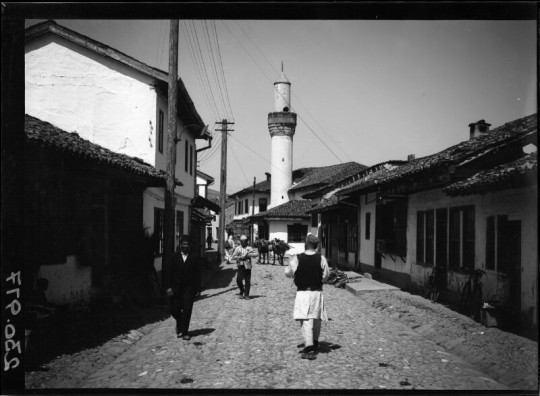
Streets of Novi Pazar, Serbia, 1934. Karl Konig, ONB
102 notes
·
View notes
Text



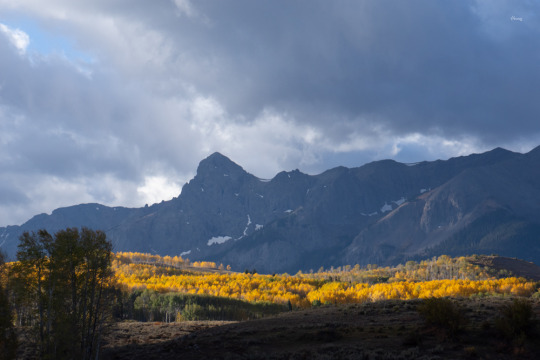
9AM
#Multicultural city in Deciduous Forest within North America 521 ft/76.5m above sea level#Imperial City in Mediterranean scrub within Southern Europe 171 ft/52m above sea level#Subtropical Thorn Woodland 52 ft/16m above sea level in Southwestern USA#Alpine subarctic 8825 ft/2690m above sea level in Southwestern USA#ishootsometimes#hourbyhour#landscape photography#street photography#out there#outside#vvrong
16 notes
·
View notes
Text

Hallstatt, Austria: Hallstatt is a small town in the district of Gmunden, in the Austrian state of Upper Austria. Situated between the southwestern shore of Hallstätter See and the steep slopes of the Dachstein massif, the town lies in the Salzkammergut region, on the national road linking Salzburg and Graz. Hallstatt is known for its production of salt, dating back to prehistoric times, and gave its name to the Hallstatt culture, the archaeological culture linked to Proto-Celtic and early Celtic people of the Early Iron Age in Europe, c. 800–450 BC. Wikipedia
105 notes
·
View notes
Text
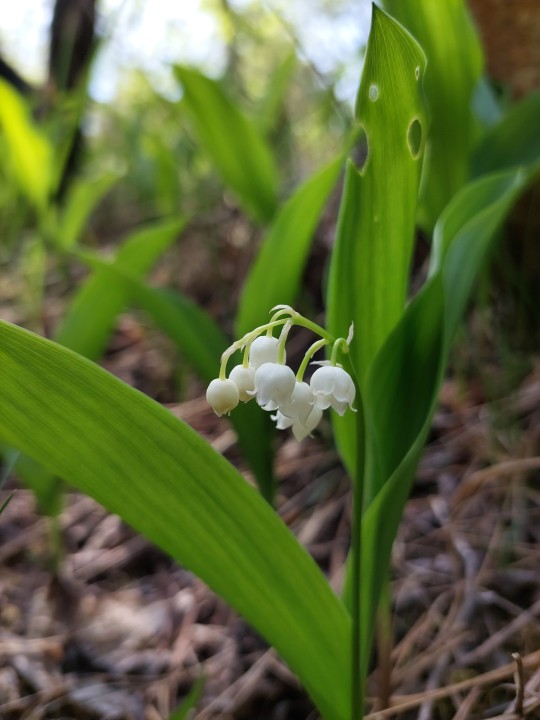




Deliblato Sands is a large sand area covering around 300 km² of ground in Vojvodina province, Serbia. It is located in southern Banat, situated between the river Danube and the southwestern slopes of the Carpathian Mountains.
The Deliblato Sands is the largest sandy terrain in Europe, once part of a vast prehistoric desert, having originated from the withdrawal of the Pannonian Sea. They are home to many endemic species of plants and animals which are rare or endangered in Europe and globally. Due to its forest and surroundings, it was declared a special nature reserve. On a national level, it represents a natural asset of special importance falling under protection category I.
And my favourite place to walk. 💚
82 notes
·
View notes
Text
Early humans migrated from Africa 84,000 years ago to populate the rest of the world by following river routes through Jordan - not going via the Red Sea as previously thought, according to a new scientific study.
Scientists from the University of Southampton and Shantou University in China carried out field work in Jordan's rift valley where they found hand tools buried in the sediment of now-dried up rivers.
Using luminescence dating techniques they traced them back to around 84,000 years ago.
Modern humans evolved in Africa between 200,000 and 300,000 years ago and migrated from the continent in several stages to populate Asia and then Europe.
It was previously thought that when sea levels were low they travelled from the horn of Africa to southwestern Arabia via the Red Sea.
But the discovery of the tools seems to confirm another theory that they took a land-only route to the north towards Jordan.
Continue Reading
86 notes
·
View notes
Photo

2023 : When In France II [Europe Trip Day 09 France]
w/BV. Le Château, LP, southwestern France.
54 notes
·
View notes
Text
Countries that are no more: Achaemenid Empire (550BC-330BC)
It was not the first empire of Iranian peoples, but it arose as probably the greatest in terms of influence and became the measure by which all subsequent Iranian empires tended to compare themselves and its influence on culture, government & civil infrastructure would influence others beyond the span of its territory and the span of time. This is the Achaemenid Empire.
Name: In Old Persian it was known as Xšāça or the "The Kingdom or the Empire", it was named the Achaemenid Empire by later historians. Named after the ruling dynasty established by its founder Cyrus the Great who cited the name of his ancestor Haxāmaniš or Achaemenes in Greek as progenitor of the dynasty. It is sometimes also referred to as the First Persian Empire. The Greeks simply referred to it as Persia, the name which stuck for the geographic area of the Iranian plateau well into the modern era.
Language: Old Persian & Aramaic were the official languages. With Old Persian being an Iranian language that was the dynastic language of the Achaemenid ruling dynasty and the language of the Persians, an Iranian people who settled in what is now the southwestern Iranian plateau or southwest Iran circa 1,000 BC. Aramaic was a Semitic language that was the common and administrative language of the prior Neo-Assyrian & Neo-Babylonian Empires which centered in Mesopotamia or modern Iraq, Syria & Anatolian Turkey. After the Persian conquest of Babylon, the use of Aramaic remained the common tongue within the Mesopotamian regions of the empire, eventually becoming a lingua franca across the land. As the empire spread over a vast area and became increasingly multiethnic & multicultural, it absorbed many other languages among its subject peoples. These included the Semitic languages Akkadian, Phoenician & Hebrew. The Iranian language of Median among other regional Iranian languages (Sogdian, Bactrian etc). Various Anatolian languages, Elamite, Thracian & Greek among others.
Territory: 5.5 million kilometers squared or 2.1 million square miles at its peak circa 500BC. The Achaemenid Empire spanned from southern Europe in the Balkans (Greece, Bulgaria, European Turkey) & northwest Africa (Egypt, Libya & Sudan) in the west to its eastern stretches in the Indus Valley (Pakistan) to parts of Central Asia in the northeast. It was centered firstly in the Iranian Plateau (Iran) but also held capitals in Mesopotamia (Iraq). Territory was also found in parts of the Arabian Peninsula & the Caucausus Mountains.
Symbols & Mottos: The Shahbaz or Derafsh Shahbaz was used as the standard of Cyrus the Great, founder of the empire. It depicts a bird of prey, typically believed to be a falcon or hawk (occasionally an eagle) sometimes rendered gold against a red backdrop and depicts the bird holding two orbs in its talons and adorned with an orb likewise above its head. The symbolism was meant to depict the bird guiding the Iranian peoples to conquest and to showcase aggression & strength coupled with dignity. The imperial family often kept falcons for the pastime of falconry.
Religion: The ancient Iranian religion of Zoroastrianism served as the official religion of the empire. It was adopted among the Persian elite & and had its unique beliefs but also helped introduce the concept of free-will among its believers, an idea to influence Judaism, Christianity & Islam in later centuries. Despite this official religion, there was a tolerance for local practices within the subject regions of the empire. The ancient Mesopotamian religion in Babylon & Assyria, Judaism, the Ancient Greek & Egyptian religions & Vedic Hinduism in India was likewise tolerated as well. The tolerance of the Achaemenids was considered a relative hallmark of their dynasty from the start. Famously, in the Old Testament of the Bible it was said that it was Cyrus the Great who freed the Jews from their Babylonian captivity and allowed them to return to their homeland of Judea in modern Israel.
Currency: Gold & silver or bimetallic use of coins became standard within the empire. The gold coins were later referred to as daric and silver as siglos. The main monetary production changes came during the rule of Darius I (522BC-486BC). Originally, they had followed the Lydian practice out of Anatolia of producing coins with gold, but the practice was simplified & refined under the Achaemenids.
Population: The estimates vary ranging from a low end of 17 million to 35 million people on the upper end circa 500BC. The official numbers are hard to determine with certainty but are generally accepted in the tens of millions with the aforementioned 17-35 million being the most reasonable range based on available sources.
Government: The government of the Achaemenid Empire was a hereditary monarchy ruled by a king or shah or later referred to as the ShahanShah or King of Kings, this is roughly equivalent to later use of the term Emperor. Achaemenid rulers due the unprecedented size of their empire held a host of titles which varied overtime but included: King of Kings, Great King, King of Persia, King of Babylon, Pharaoh of Egypt, King of the World, King of the Universe or King of Countries. Cyrus the Great founded the dynasty with his conquest first of the Median Empire and subsequently the Neo-Babylonians and Lydians. He established four different capitals from which to rule: Pasargadae as his first in Persia (southwest central Iran), Ecbatana taken from the Medians in western Iran's Zagros Mountains. The other two capitals being Susa in southwest Iran near and Babylon in modern Iraq which was taken from the Neo-Babylonians. Later Persepolis was made a ceremonial capital too. The ShahanShah or King of Kings was also coupled with the concept of divine rule or the divinity of kings, a concept that was to prove influential in other territories for centuries to come.
While ultimate authority resided with the King of Kings and their bureaucracy could be at times fairly centralized. There was an expansive regional bureaucracy that had a degree of autonomy under the satrapy system. The satraps were the regional governors in service to the King of Kings. The Median Empire had satraps before the Persians but used local kings they conquered as client kings. The Persians did not allow this because of the divine reverence for their ShahanShah. Cyrus the Great established governors as non-royal viceroys on his behalf, though in practice they could rule like kings in all but name for their respective regions. Their administration was over their respective region which varied overtime from 26 to 36 under Darius I. Satraps collected taxes, acted as head over local leaders and bureaucracy, served as supreme judge in their region to settle disputes and criminal cases. They also had to protect the road & postal system established by the King of Kings from bandits and rebels. A council of Persians were sent to assist the satrap with administration, but locals (non-Persian) could likewise be admitted these councils. To ensure loyalty to the ShahanShah, royal secretaries & emissaries were sent as well to support & report back the condition of each satrapy. The so called "eye of the king" made annual inspections of the satrapy to ensure its good condition met the King of Kings' expectations.
Generals in chief were originally made separate to the satrap to divide the civil and military spheres of government & were responsible for military recruitment but in time if central authority from the ShahanShah waned, these could be fused into one with the satrap and general in chiefs becoming hereditary positions.
To convey messages across the widespread road system built within the empire, including the impressive 2,700 km Royal Road which spanned from Susa in Iran to Sardis in Western Anatolia, the angarium (Greek word) were an institution of royal messengers mounted on horseback to ride to the reaches of the empire conveying postage. They were exclusively loyal to the King of Kings. It is said a message could be reached to anywhere within the empire within 15 days to the empire's vast system of relay stations, passing message from rider to rider along its main roads.
Military: The military of the Achaemenids consisted of mostly land based forces: infantry & cavalry but did also eventually include a navy.
Its most famous unit was the 10,000-man strong Immortals. The Immortals were used as elite heavy infantry were ornately dressed. They were said to be constantly as 10,000 men because for any man killed, he was immediately replaced. Armed with shields, scale armor and with a variety of weapons from short spears to swords, daggers, slings, bows & arrows.
The sparabara were the first line of infantry armed with shields and spears. These served as the backbone of the army. Forming shield walls to defend the Persian archers. They were said to ably handle most opponents and could stop enemy arrows though their shields were vulnerable to enemy spears.
There was also the takabara light infantry and though is little known of them it seems they served as garrison troops and skirmishers akin to the Greek peltast of the age.
The cavalry consisted of four distinct groups: chariot driven archers used to shoot down and break up enemy formations, ideally on flat grounds. There was also the traditional horse mounted cavalry and also camel mounted cavalry, both served the traditional cavalry functions and fielded a mix of armor and weapons. Finally, there was the use of war elephants which were brought in from India on the empire's eastern reaches. These provided archers and a massive way to physically & psychologically break opposing forces.
The navy was utilized upon the empire's reaching the Mediterranean and engaged in both battles at sea and for troop transport to areas where troops needing deploying overseas, namely in Greece.
The ethnic composition of Achaemenid military was quite varied ranging from a Persian core with other Iranian peoples such as the Medians, Sogdian, Bactrians and Scythians joining at various times. Others including Anatolians, Assyrians, Babylonians, Anatolians, Indians, Arabs, Jews, Phoenicians, Thracians, Egyptians, Ethiopians, Libyans & Greeks among others.
Their opponents ranged from the various peoples they conquered starting with the Persian conquest of the Medians to the Neo-Babylonians, Lydians, Thracians, Greeks, Egyptians, Arabs & Indians and various others. A hallmark of the empire was to allow the local traditions of subjugated areas to persist so long as garrisons were maintained, taxes were collected, local forces provided levies to the military in times of war, and they did not rebel against the central authority.
Economy: Because of the efficient and extensive road system within the vast empire, trade flourished in a way not yet seen in the varied regions it encompassed. Tax districts were established with the satrapies and could be collected with relative efficiency. Commodities such as gold & jewels from India to the grains of the Nile River valley in Egypt & the dyes of the Phoenicians passed throughout the realm's reaches. Tariffs on trade & agricultural produce provided revenue for the state.
Lifespan: The empire was founded by Cyrus the Great circa 550BC with his eventual conquest of the Median & Lydian Empires. He started out as Cyrus II, King of Persia a client kingdom of the Median Empire. His reign starting in 559BC. Having overthrown and overtaken the Medians, he turned his attention Lydia and the rest of Anatolia (Asia Minor). He later attacked the Eastern Iranian peoples in Bactria, Sogdia and others. He also crossed the Hindu Kush mountains and attacked the Indus Valley getting tribute from various cities.
Cyrus then turned his attention to the west by dealing with the Neo-Babylonian Empire. Following his victory in 539BC at the Battle of Opis, the Persians conquered the Babylonia with relative quickness.
By the time of Cyrus's death his empire had the largest recorded in world history up to that point spanning from Anatolia to the Indus.
Cyrus was succeeded by his sons Cambyses II and Bardiya. Bardiya was replaced by his distant cousin Darius I also known as Darius the Great, whose lineage would constitute a number of the subsequent King of Kings.
Darius faced many rebellions which he put down in succession. His reign is marked by changes to the currency and the largest territorial expansion of the empire. An empire at its absolute zenith. He conquered large swaths of Egypt, the Indus Valley, European Scythia, Thrace & Greece. He also had exploration of the Indian Ocean from the Indus River to Suez Egypt undertaken.
The Greek kingdom of Macedon in the north reaches of the Hellenic world voluntarily became a vassal of Persia in order to avoid destruction. This would prove to be a fateful first contact with this polity that would in time unite the Greek-speaking world in the conquest of the Achaemenid Empire. However, at the time of Darius I's the reign, there were no early indications of this course of events as Macedon was considered even by other Greek states a relative backwater.
Nevertheless, the Battle of Marathon in 490BC halted the conquest of mainland Greece for a decade and showed a check on Persia's power in ways not yet seen. It is also regarded as preserving Classical Greek civilization and is celebrated to this day as an important in the annals of Western civilization more broadly given Classical Greece & in particular Athens's influence on western culture and values.
Xerxes I, son of Darius I vowed to conquer Greece and lead a subsequent invasion in 480BC-479BC. Xerxes originally saw the submission of northern Greece including Macedon but was delayed by the Greeks at the Battle of Thermopylae, most famously by Spartan King Leonidas and his small troop (the famed 300). Though the Persians won the battle it was regarded as a costly victory and one that inspired the Greeks to further resistance. Though Athens was sacked & burnt by the Persians, the subsequent victories on sea & land at Salamis & Plataea drove the Persians back from control over Greece. Though war would rage on until 449BC with the expulsion of the Persians from Europe by the Greeks.
However, the Greeks found themselves in a civil war between Athens & Sparta and Persia having resented the Athenian led coalition against their rule which had expelled them from Europe sought to indirectly weaken the Greeks by supporting Greek factions opposed to Athens through political & financial support.
Following this reversal of fortune abroad, the Achaemenid Empire not able to regain its foothold in Europe, turned inward and focused more on its cultural development. Zoroastrianism became the de-facto official religion of the empire. Additionally, architectural achievements and improvements in its many capitals were undertaken which displayed the empire's wealth. Artaxerxes II who reigned from 405BC-358BC had the longest reign of any Achaemenid ruler and it was characterized by relative peace and stability, though he contended with a number of rebellions including the Great Satraps Revolt of 366BC-360BC which took place in Anatolia and Armenia. Though he was successful in putting down the revolt. He also found himself at war with the Spartans and began to sponsor the Athenians and others against them, showcasing the ever dynamic and changing Greco-Persian relations of the time.
Partially for safety reasons, Persepolis was once again made the capital under Artaxerxes II. He helped expand the city and create many of its monuments.
Artaxerxes III feared the satraps could no longer be trusted in western Asia and ordered their armies disbanded. He faced a campaign against them which suffered some initial defeats before overcoming these rebellions, some leaders of which sought asylum in the Kingom of Macedon under its ruler Philip II (father of Alexander the Great).
Meanwhile, Egypt had effectively become independent from central Achaemenid rule and Artaxerxes III reinvaded in around 340BC-339BC. He faced stiff resistance at times but overcame the Egyptians and the last native Egyptian Pharaoh Nectanebo II was driven from power. From that time on ancient Egypt would be ruled by foreigners who held the title Pharaoh.
Artaxerxes III also faced rebellion from the Phoenicians and originally was ejected from the area of modern coastal Lebanon, Syria & Israel but came back with a large army subsequently reconquered the area including burning the Phoenician city of Sidon down which killed thousands.
Following Artaxerxes III's death his son succeeded him but a case of political intrigue & dynastic murder followed. Eventually Darius III a distant relation within the dynasty took the throne in 336BC hoping to give his reign an element of stability.
Meanwhile in Greece, due to the military reforms and innovations of Philip II, King of Macedon, the Greek speaking world was now unified under Macedon's hegemony. With Philip II holding the title of Hegemon of the Hellenic League, a relatively unified coalition of Greek kingdoms and city-states under Macedon premiership that formed to eventually invade Persia. However, Philip was murdered before his planned invasion of Asia Minor (the Achaemenid's westernmost territory) could commence. His son Alexander III (Alexander the Great) took his father's reforms and consolidated his hold over Greece before crossing over to Anatolia himself.
Darius III had just finished reconquering some rebelling vestiges of Egypt when Alexander army crossed over into Asia Minor circa 334BC. Over the course of 10 years Alexander's major project unfolded, the Macedonian conquest of the Persian Empire. He famously defeated Persians at Granicus, Issus and Gaugamela. The latter two battles against Darius III in person. He took the King of Kings family hostage but treated them well while Darius evacuated to the far eastern reaches of his empire to evade capture. He was subsequently killed by one of his relatives & satraps Bessus, whom Alexander eventually had killed. Bessus had declared himself King of Kings though this wasn't widely recognized and most historians regard Darius III, the last legitimate ShahanShah of Achaemenids.
Alexander had taken Babylon, Susa & Persepolis by 330BC and effectively himself was now ruler of the Persian Empire or at least its western half. In addition to being King of Macedon & Hegemon of the Hellenic League, he gained the titles King of Persia, Pharaoh of Egypt & Lord of Asia. Alexander would in time eventually subdue the eastern portions of the Achaemenid realm including parts of the Indus Valley before turning back to Persia and Babylon where he subsequently became ill and died in June 323BC at age 32. Alexander's intentions it appears were never to replace the Achaemenid government & cultural structure, in fact he planned to maintain and hybridize it with his native Greek culture. He was in fact an admirer of Cyrus the Great (even restoring his tomb after looting) & adopted many Persian customs and dress. He even allowed the Persians to practice their religion and had Persian and Greeks start to serve together in his army. Following his death and with no established successor meant the empire he established which essentially was the whole Achaemenid Empire's territory in addition to the Hellenic world fragmented into different areas run by his most trusted generals who established their own dynasties. The Asian territories from Anatolia to the Indus (including Iran and Mesopotamia) gave way to the Hellenic ruled Seleucid Empire while Egypt became the Hellenic ruled Ptolemaic Kingdom. The synthesis of Persian and Greek cultures continued in the Seleucid and Greco-Bactrian kingdoms of antiquity.
The Achaemenid Empire lasted for a little over two centuries (550BC-330BC) but it casted a long shadow over history. Its influence on Iran alone has persisted into the modern age with every subsequent Persian Empire claiming to be its rightful successor from the Parthian & Sasanian Empires of pre-Islamic Iran to the Safavids of the 16th-18th century and the usage of the title Shah until the last Shah's ejection from power in the 1979 Islamic Revolution. Even the modern Islamic Republic of Iran uses Achaemenid imagery in some military regiments and plays up its importance in tourism and museums as a source of pride to Persian (Farsi) & indeed Iranian heritage. Likewise, its form of governance and the pushing of the concept of divine rights of kings would transplant from its Greek conquerors into the rest of Europe along with various other institutions such as its road & mail system, tax collection & flourishing trade. Its mix of centralized & decentralized governance. Its religious & cultural tolerance of local regions even after their conquest would likewise serve as a template for other empires throughout history too. The Achaemenid Empire served as a template for vast international & transcontinental empires that would follow in its wake & surpass its size & scope of influence. However, it is worth studying for in its time, it was unprecedented, and its innovations so admired by the likes of Alexander the Great and others echo into the modern era.
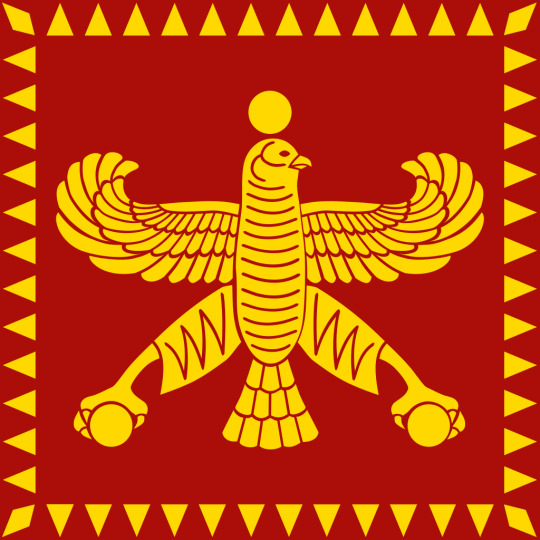
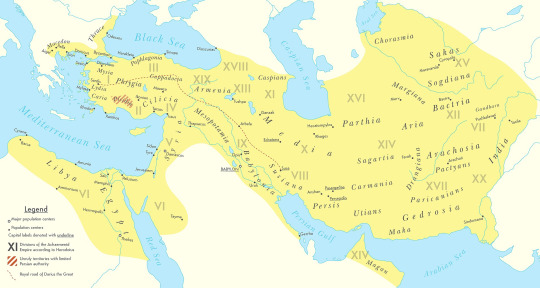


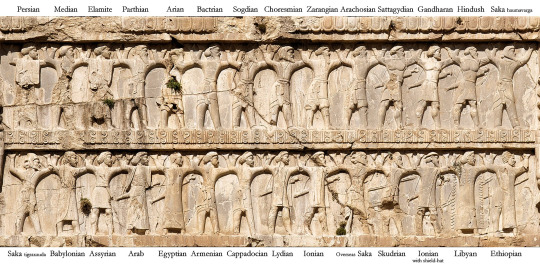
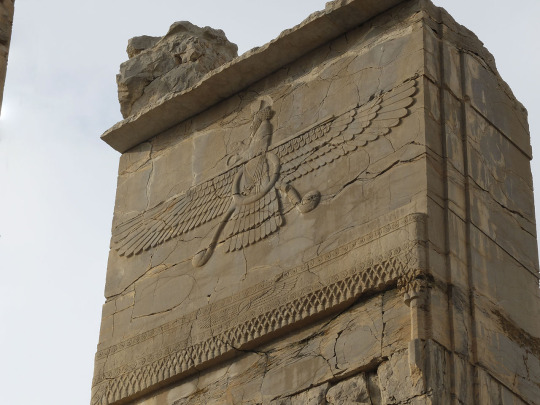




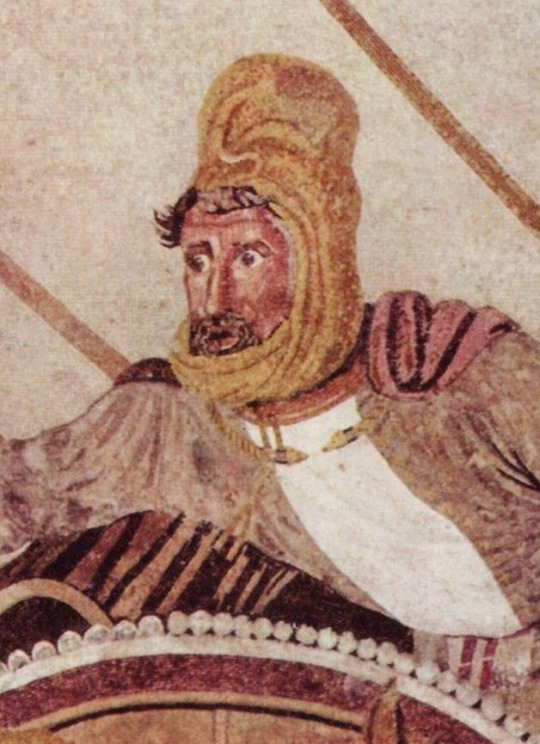
#military history#antiquity#iran#greece#ancient greece#classical greece#ancient ruins#ancient iran#ancient persia#achaemenid#persia#zoroastrianism#alexander the great#cyrus the great#xerxes#artwork#government#history#persian empire#ancient egypt
89 notes
·
View notes
Text
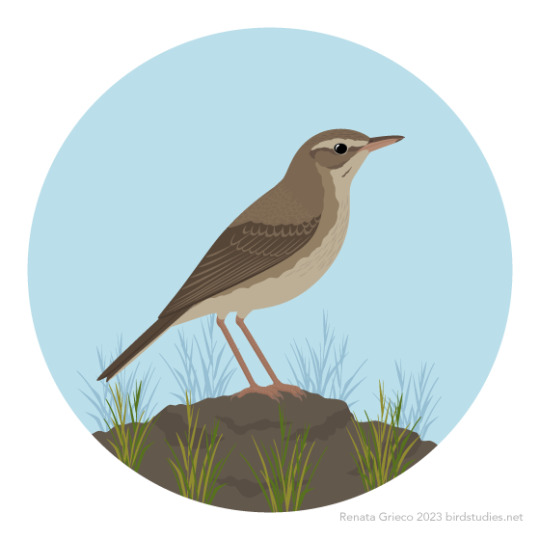
September 22, 2023 - Tawny Pipit (Anthus campestris)
Breeding from southern and central Europe south into northwestern Africa and east to northwestern China, these pipits winter in sub-Saharan Africa, Arabia, and southwestern Asia. They mostly eat insects, along with some other invertebrates, seeds, and occasionally small reptiles, usually foraging on the ground, running and pecking at prey. Females do most of the nest construction, building cups from grass stems, leaves, roots, other plant materials, and hair in scrapes on the ground or in tufts of grass. They lay clutches of three to six eggs and probably incubate them alone, though males may sometimes help. Both parents feed the chicks.
58 notes
·
View notes
Text
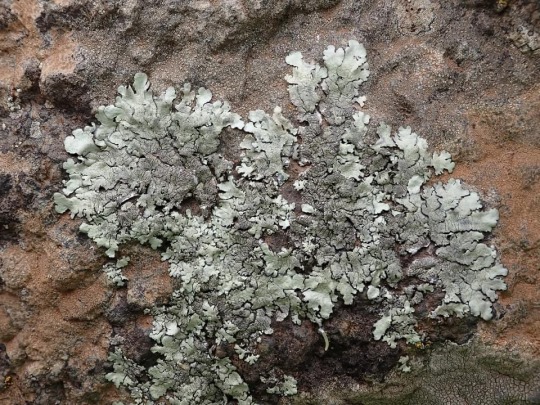


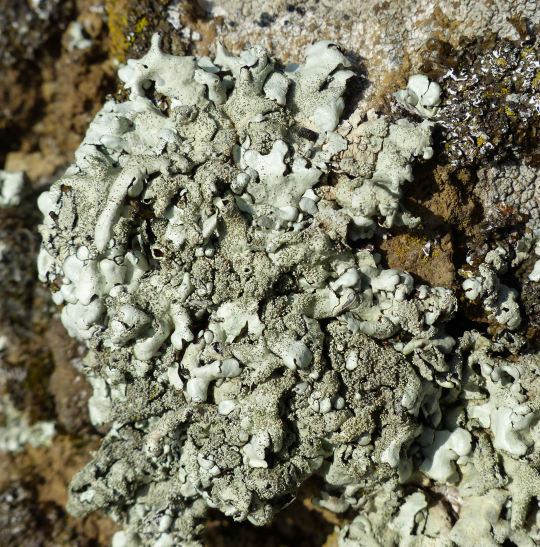
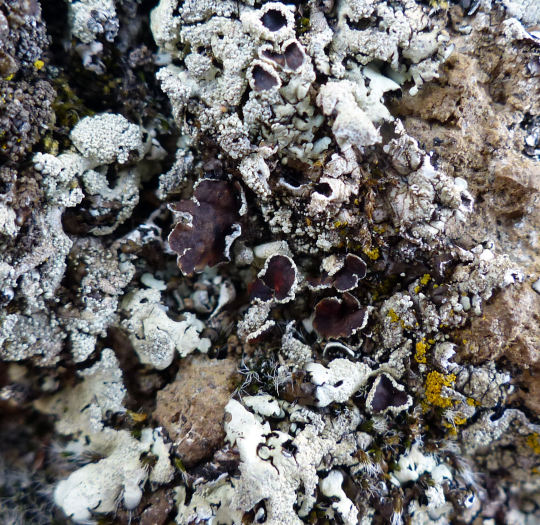
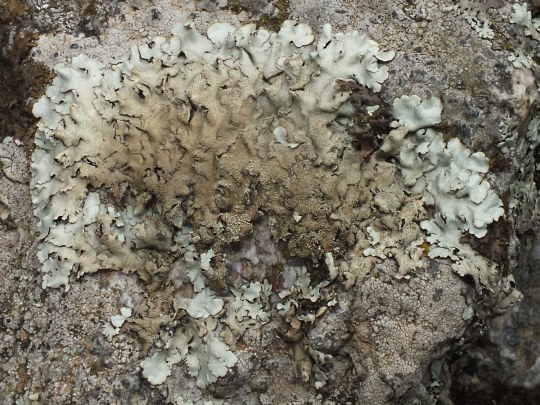


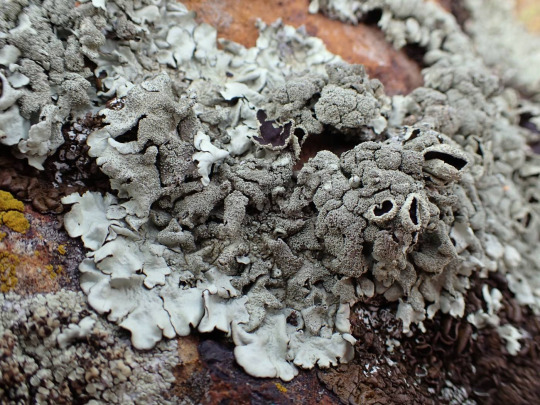
Xanthoparmelia tinctina
Do you ever get overwhelmed by the sheer number of very good bois there are out there in the world? Like when you realize you cannot possibly get to know and love them all in your lifetime because there are just too many? Yeah, I feel ya. Today's very good boi is X. tinctina: a foliose, rosette-forming lichen which grows on exposed, siliceous rock in Europe, northern Africa, and southwestern North America. It has a yellow-green to gray-white upper surface covered in globose or barrel-shaped isidia. It produces substipitate apothecia with a flexuose margin and a concave, brown disc. It is very similar in appearance to X. conspera, making it even more difficult to find and know and love, but it can be distinguished by a K+ red chemical reaction. Sometimes a love that is difficult to earn is the most rewarding . . . when it comes to lichens and like, cats and stuff. Not people. Don't waste our time on that shit. Do waste our time learning to ID lichens.
images: source | source
info: source | source | source
#lichen#lichens#lichenology#lichenologist#fungus#fungi#mycology#ecology#biology#botany#bryology#cryptogam#life science#environmental science#natural science#nature#naturalist#beautiful nature#weird nature#trypo#trypophobia#Xanthoparmelia tinctina#Xanthoparmelia#I'm lichen it#lichen a day#daily lichen post#lichen subscribe
73 notes
·
View notes
Photo
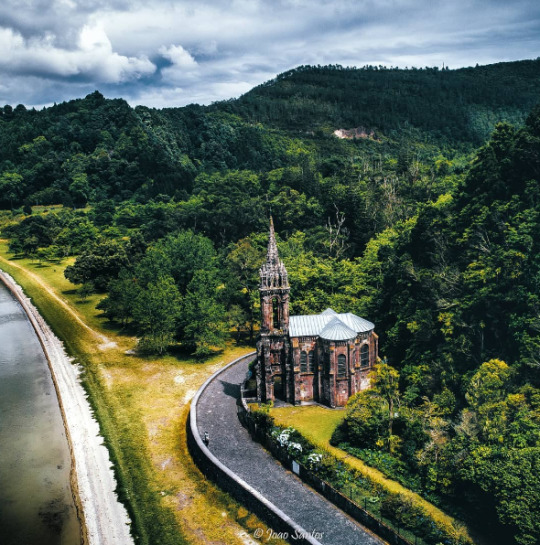
By _Joaopsantos_
Furnas, Azores, Portugal
325 notes
·
View notes
Text

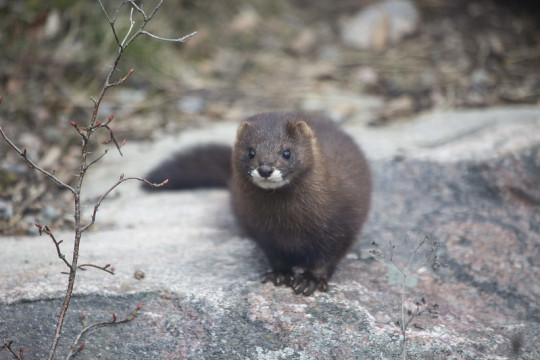
European mink (Mustela lutreola)
Korkeasaari Zoo, Helsinki, Finland
Once widespread across the European continent, the range of the European mink is now limited to northern Spain and southwestern France, the Danube Delta, and possibly parts of western Russia. It is the rarest terrestrial carnivore in Europe, listed by the IUCN as critically endangered.
Photos [1, 2] by Annika Sorjonen
660 notes
·
View notes
Text

Miss Universe Slovakia 2023 National Costume
'Ethereal Serenity' The golden threads shimmer subtly, evoking the image of the Slovak landscape and the Danube river, and symbolizing my homeland Rye Island which is a river island in southwestern Slovakia. The corset design creates the shape of the heart, symbolising my beautiful country in the heart of Europe with it's gorgeous culture, history, and hospitality as well as the enduring bonds of family and community to emphasize the importance of love and unity in Slovak culture. Above all, this redesign is crafted to empower femininity. It transcends mere clothing, becoming a statement of confidence and individuality shown in the balance between tradition and innovation. In providing both comfort and freedom it is a powerful celebration of feminine strength and poise, encouraging us all to take pride in our identities with true confidence and grace. "Ethereal Serenity" is more than just clothing; it is a model of success and elegance to inspire the world.
29 notes
·
View notes
Text
This Wet Beast Wednesday is going to get dark. Not because of any grim subject matter, but because it involves caves. The olm (Proteus anguinus) is a cave-dwelling salamander classified as a troglobite, meaning it lives only in caves and cannot survive elsewhere. Compare to a trogophile (lives both in caves and outside) and a trogloxene (visits caves, but can't survive long-term in them). It is found in caves in the Dinaric Alps mountain range and can be found near Trieste, Italy, southwestern Croatia, and Bosnia, and has been introduced to a few other cave systems. Historically, they have been known for washing out of caves after heavy rainfall, where they were often though to be baby cave dragons. The olm sets the record for being Europes only trogolobitic chordate and the largest trogobite in the world at 20-30 cm (8-12 in) long.

(Image: a olm seen from above)
Unlike most salamanders, the olm is exclusively aquatic, living entirely underwater. To support this lifestyle, it is neotenic (retains juvenile characterists as an adult), having external gills for its entire life. The adult form does have lungs, but they are only used in ery low-oxygen environments. Despite sharing this adaptation with the North American axolotl, the two species are not closely related. They also have multiple adaptations for a life spent in complete darkness. Like many other cave-dwellers, olms are blind. Their eyes are very underdeveloped, but are still sensitive enough to detect light, which the olm flees from. To compensate, their other senses are more developed than those of other salamanders. They have powerful chemoreception through taste and smell, able to detect very low concentrations of chemicals in the water. It also has powerful hearing and a unique organ on its head that allows it to pick up electric fields. They are known to use this sense to orient themselves with the planet's magnetic field lines. Olm skin is thin and has no pigment, giving it a very pale coloration. They do retain the ability to create melanin and will gradually darken if exposed to light, though this is stressful for it. Their bodies are long, slender, and flexible, with underdeveloped legs. This allows them to have more sensory receptors along the body as well as helping them move through tight places.

(image: the head of an olm)
Olms live life in slow motion. The scarcity of food in their habitats is matched with a very slow metabolism that also gives them extremely long lifespans. They feed on small invertebrates and are capable of going on extremely long fasts between meals by reducing activity and metabolic rate. Olms can last up to 10 years between meals and one was recorded as staying in the same spot for 7 years without moving. They have an estimated maximum lifespan of 100 years and an estimated average lifespan of around 68 years. It takes a juvenile around 14 years to become sexually mature (though this rate in increased in warmer water) and females typically only reproduce every 12.5 years. Sexually active males establish a territory and chase other males away. This is notable because olms are otherwise gregarious, meaning they try to live around others. Mating pairs perform a mating ritual in which they circle around each other while touching each other with their snouts. The male then releases a spermatophore (sperm capsule) and the two wriggle together until it reaches the female's cloaca. Females lay their eggs in small cracks or between rocks and protect them as they develop. Some older references state that olms give live birth at low enough temperatures, but this has never been observed by scientists.

(gif: an olm moving around)
Olms have a subspecies called the black olm (Proteus anguinus parkelj) that is found in a very small cave system in Slovenia and has several differences from other olms. Black olms have pigmented skin, fully developed (though still small) eyes, and its other senses are weaker. This suggests that the black olm is a much more recent colonist of caves and has yet to fully adapt to an underground lifestyle. In addition, olms from different cave systems have minor physical variations, usually involving head size.
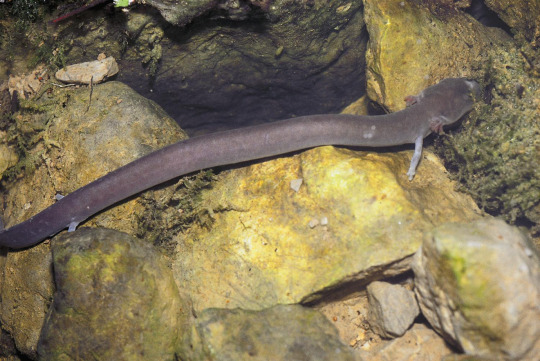
(image: a black olm from above)
Olms are classified as vulnerable by the IUCN, though local populations may have their own classifications. Their biggest threat is from pollution, especially wastewater runoff containing pesticides, fertilizers, and PCBs. Olms are also targeted by the black market pet trade and many places have laws preventing the removal of olms except for scientific purposes. Caves are temporary structures and species specially adapted to live in them will always be in danger should the environment change rapidly or the cave collapses. Olms have been introduced to a few other cave systems. Olms are considered a national symbol of Slovenia, especially as their presence in Postojna cave was one of the inspirations for the beginning of cave biology as a field and they are still used to encourage ecotourism.
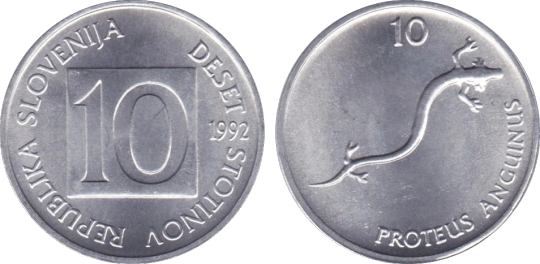
(image: an official Slovenian coin depicting an olm)
#wet beast wednesday#biology#animals#zoology#ecology#olm#salamander#amphibian#neoteny#cave#cave biology#speleobiology#cave animal#axolotl but longer
130 notes
·
View notes
Text

November is National Native American Heritage month in the USA! Did you know that many of the UK’s favourite kitchen garden plants were originally domesticated by indigenous peoples in the Americas? The Native Americans’ domesticated plants now feed most of the world and have become an integral part of cuisines in Europe, Africa, and Asia.
1. Potato: Potato (Solanum tuberosum) was domesticated by indigenous Americans in the Andes at least 10,000 years ago. Genetic studies indicate hybridization of different wild potato varieties in the species Solanum brevicaule in Southern Peru produced the original domesticated potato. Today, indigenous people in Peru have over 4000 varieties of potato, each with their culinary and cultural significance. The Chuño potato can be preserved for up to 15 years, making it an important food source during lean times in the days of the Inca Empire.
2. Corn: Indigenous Americans domesticated corn (Zea mays) from the wild grass Teosinte (Zea mays parviglumis) of southwestern Mexico approximately 9,000 years ago. The wild Teosinte is a miniature corn, with ears containing only 5-12 hard seeds. From the initial domestication in Mexico, corn spread north and south to become the iconic food plant of indigenous America. Native American corn differs from the familiar sweetcorn because it was selectively bred to be dried and preserved rather than eaten fresh. Native American corn varieties can be a kaleidoscope of beautiful colours and are either flint corn (dried for preservation and then soaked for food purposes), flour corn (processed into masa harina flour), or popcorn.
3. Beans: Our familiar kitchen garden beans all come from indigenous American agriculture. The fresh green beans and most of the dried beans belong to the same species, the Common Bean (Phaseolus vulgaris) which was domesticated via hybridization of several wild species in Mesoamerican around 4,000 years ago. The Lima Bean (Phaseolus lunatus) was domesticated in South America around 4,000 years ago and spread north of the Rio Grande by the 1300’s.
#katia plant scientist#plants#gardening#agriculture#crops#potatoes#corn#beans#native american#native american heritage month#indigenous food#history#native american culture#native american food#domestication#botany#plant based
48 notes
·
View notes